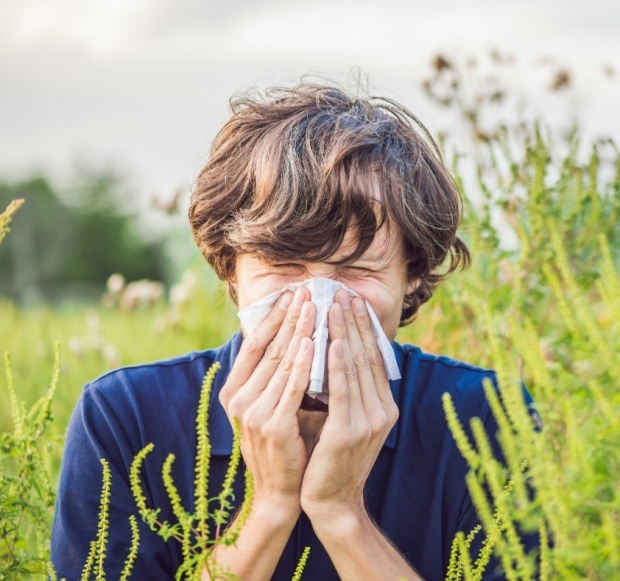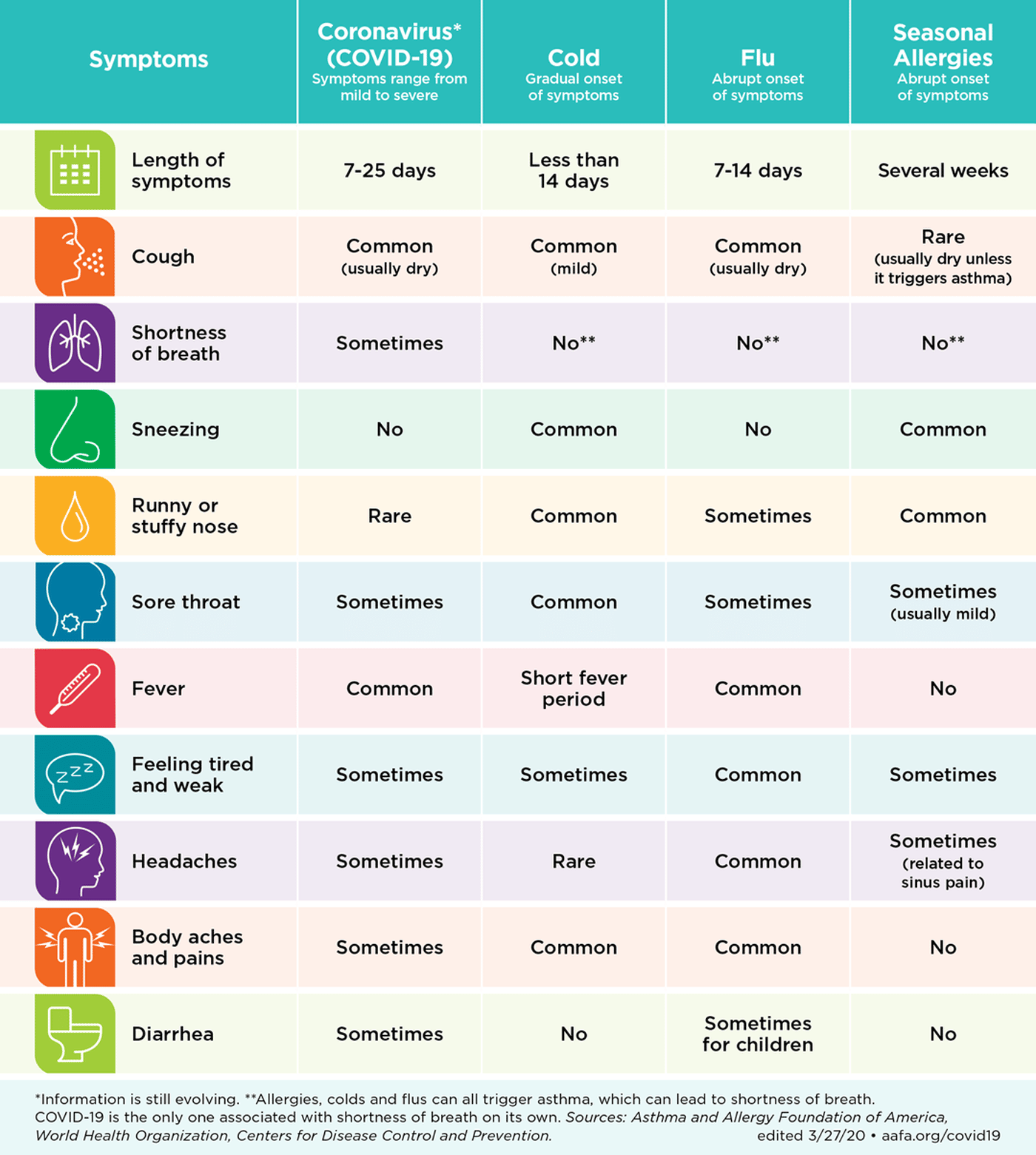Sublingual Immunotherapy Allergy Drops
When allergy medications and limiting your exposure arent providing you with the relief you need, you may want to consider allergy immunotherapy. Immunotherapy introduces small amounts of your allergen to your immune system in gradually increasing doses. This teaches your immune system to ignore these triggers, bringing you long-term, often permanent relief. Sublingual immunotherapy allergy drops are an especially convenient option since theyre painless and you can get them delivered right to your door.
When To See An Allergist
Many allergy sufferers are able to manage their own symptoms with the occasional use of an over-the-counter medication. However, sometimes allergies can interfere with day-to-day activities or decrease ones quality of life. Seeing an allergist can help you identify which allergens trigger your symptoms and discover the best treatment options for you.
Allergies In Southern California
Thanks to the pleasant Mediterranean climate of southern California, heavy jackets and snow pants do not dominate closet space. Instead, light sweaters and jeans keep residents and visitors comfortable year-round. Our mild winters and warm, dry summers also mean we do not get a winter reprieve from seasonal allergies. Something is always blooming here! The best months for allergy sufferers to breathe deeply are November through January, but even then, we sometimes see elevated pollen counts.
The New Year brings the start of elevated tree pollen levels, the intensity of which depends on rainfall amounts during the winter rainy season . If we have seen a relatively wet winter, more trees, grasses, and weeds will produce and disperse pollen during the year ahead. The trees that cause the most problems January through May are ash, eucalyptus, mulberry, olive, oak, sycamore, and walnut.
Late spring/early summer welcomes grass pollen to the forefront of the allergy forecast. The grasses that cause the most issues include bermuda, blue, oat, rye grasses. Frequent lawn mowing churns everything up and throws the pollen into the air.
Fall finds the kids going back to school and the start of weed pollen season. Weeds that produce and spread problematic pollen include California sagebush, pigweed, elm, and Russian thistle.
Recommended Reading: How Do You Get Rid Of Allergies
San Diego/los Angeles/santa Barbara/channel Islands National Park
The San Diego/Los Angeles/Santa Barbara/Channel Islands National Park areas start spring with tree allergies from cypress, willow, oak, maple, walnut, and ash pollen. Summer allergies include Bermuda, bent, timothy, and orchard grasses, along with ryegrass and bluegrass. Fall allergies consist of ragweed, saltbush, Russian thistle, amaranth, and sagebrush.
Is It Allergies Or A Cold

What Are Allergies?
Seasonal allergies occur when the body’s immune system overreacts to foreign triggers. These are typically harmless substances such as pollen, pet dander, dust or other debris. A person will get an allergic reaction when the immune system mistakes these substances for invaders. When the immune system overreacts and incorrectly perceives these substances as harmful, it creates a variety of symptoms in the body.
You May Like: Can Food Allergies Cause High White Blood Cell Count
Helping Out In San Antonio
On a day with a high pollen count, volunteering indoors can help youfeel better in more ways than one. Help out with tasks like sortingand packing, answering and returning phone calls, writing thank youcards, and more.
** Kimberly-Clark and the Kleenex® Brand have no association, nor affiliation with the entities described in this newsletter. All hot spots are provided for informational purposes only.**
Why Do We Confuse Colds And Allergies
It’s easy to confuse the common cold with allergies, as they have many similar symptoms. As evident by the above lists, a runny nose, cough, congestion and sneezing are all symptoms of both the common cold or an allergic reaction. Some signs that what you are experiencing is allergies are if your mucus is clear or watery as opposed to thick and discolored, as it would be during a cold your symptoms stay the same and you have them for longer and if your eyes become itchy or watery, which does not happen during a cold.
You May Like: Will Children’s Allergy Medicine Work On Adults
Get Seasonal Allergy Relief No Matter Where You Live
In the spring, the warm weather brings people outdoors to face one of the seasons biggest problems: tree pollen. Grass pollen follows later in spring into summer. Then in the late summer and early fall, weed pollen especially ragweed pollen can trigger symptoms just as kids are returning to school.
Take these actions to reduce your contact with pollen:
- Check pollen counts or forecasts daily and plan outdoor activities on days when pollen counts are expected to be lower.
- Keep windows closed during pollen season or peak pollen times.
- Use central air conditioning or air cleaners with a CERTIFIED asthma & allergy friendly® filter and/or HEPA filtration to reduce indoor airborne allergens .
- Wear sunglasses, a mask, and a hat or other hair covering when outdoors.
- Take a shower and wash your hair before going to bed .
- Change and wash clothes after outdoor activities.
- Dry laundry in a clothes dryer or on an indoor rack, not on an outdoor line.
- Limit close contact with pets that spend a lot of time outdoors. Wipe pets off with a towel before they enter your home.
- Remove your shoes before entering your home.
- Wash bedding in hot, soapy water once a week.
When cleaning inside your home, be aware that you may stir up pollen that has collected on surfaces. CERTIFIED asthma & allergy friendly®vacuums and dusting cloths help trap and contain allergens such as pollen.
There are also over-the-counter and prescription allergy treatments available to prevent or treat allergy symptoms:
How Can You Prevent Them
Seasonal allergies, such as hay fever , are often caused by being exposed to pollen. To reduce your exposure:
- Keep your house and car windows closed.
- Limit the time you spend outside when pollen counts are high .
- Wear a pollen mask or dust mask if you need to mow the lawn.
- Limit your mowing tasks if you can.
- Rinse your eyes with cool water or saline eyedrops to remove clinging pollen after you come indoors.
- Take a shower and change your clothes after you work or play outside.
Read Also: Can Pollen Allergies Cause Body Aches
Allergy Friendly Activities In San Antonio
Even though pollen counts are significantly higher in San Antonio forabout three months each year, you can still use the time you spendaway from pollen to discover great seasonal-allergy-friendlyactivities in the city. Here’s a list of a few things San Antonio hasto offer, so you can get out there and have sniffle-free fun duringallergy season.
Pollen Forecast For San Antonio
Check out the pollen forecast in San Antonio for the next few days. Ondays with a low pollen count, San Antonio has plenty of outdooractivities, like barbecuing at Brackenbridge Park or hiking throughforests and canyons at Friedrich Wilderness Park, to help you feelrefreshed and inspired. If pollen counts are high, pack KleenexOn-the-Go, so you can stay prepared for allergies, wherever you are.
Also Check: What Is The Best Medicine For Fall Allergies
A Scripps Allergist Offers Tips To Keep Symptoms Under Control
More than 50 million Americans suffer from allergies. In fact, allergies are the sixth leading cause of chronic illness in the United States, according to the Centers for Disease Control and Prevention.
And while San Diegans who moved here from other regions are often relieved to find the seasonal allergies they suffered with back home seem to disappear, they might be surprised to learn San Diego has an allergy season too. It begins January 1 and ends December 31.
This region is unique. Theoretically, if the wind is blowing off the ocean, we should have very little pollen in the air, says Ronald Simon, MD, an allergist at Scripps Clinic. But when we get a Santa Ana wind condition, we get hit with allergens from as far away as Nevada and Arizona. And after rains, the trees, weeds and grasses in our canyons wake up and send out pollen clouds.
Allergies can make colds worse
Because San Diego doesnt have four distinct seasons like the East and the Midwest, allergens are in the air constantly. This can exacerbate nasal allergies, triggering chronic drainage and congestion, leaving allergy sufferers vulnerable to sinus infections, bronchitis and colds.
Indoor allergies are different here
Because Southern California never experiences hard freezes and frosts, mold spores never entirely go away here. In fact, local rain patterns and cool temperatures create optimal conditions for them to multiply.
Keep allergy symptoms under control
1. Avoidance and barriers
3. Antihistamines
Allergies: 5 Things To Know

Here are five things to know about allergies:
Related
Also Check: Can Allergies Cause High Lymphocytes
Barstow/palm Springs/el Centro/joshua Tree National Park
The areas of Barstow/Palm Springs/El Centro/Joshua Tree National Park will start allergy season in spring with willow, walnut, maple, oak, ash, and mulberry tree pollen. In summer, the allergies are usually due to Bermuda, bent, timothy, and orchard grasses. Fall allergies are usually from ragweed, wormwood, saltbush, sagebrush, amaranth, silverscale, orache, and burrobush.
Tony Hawk Uses Skateboarding To Teach Community Organizing
Lots of irritants collect on your floors, so vacuum them at least once a week to keep particles under control. Be careful of vacuums that can introduce dust back into the air.
Allergy sufferers should avoid a vacuum that collects debris in a bin because particles can float back into the air when its emptied. A better choice would be a bagged model with a HEPA filter.
A portable air purifier that can handle a large room can clean dust, smoke, and pollen from the air.
Your allergies might make you feel like staying inside, but mowing your lawn can help you feel better, because short grass is less likely to release pollen. In addition, wearing a mask and sunglasses will help protect you from irritants.
This article tagged under:
You May Like: Can Allergies Cause Inflamed Throat
Modern And Efficient At
How Can You Treat Seasonal Allergies
Home treatment is usually all you need to treat seasonal allergies. For example:
- Clean the inside of your nose with salt water. This can clear a stuffy nose.
- Use a vaporizer or humidifier in the bedroom and take hot showers to help clear a stuffy nose.
- If your nose is red and raw from rubbing, put petroleum jelly on the sore area.
- Use over-the-counter allergy medicine to help your symptoms.
- To relieve a stuffy nose, use a steroid nasal spray . This type of spray can also help with red, itchy, watery eyes.
- Another way to relieve a stuffy nose is a nasal or oral decongestant .
- For itchy, watery eyes sneezing or a runny, itchy nose, try a nonsedating over-the-counter antihistamine, like fexofenadine or loratadine .
- To help relieve pain, try acetaminophen or ibuprofen.
Read Also: Can You Get Allergies In Only One Eye
Nice Weather All Year Long Is A Perk In Many Ways But It Can Also Mean Allergy Season Stretches Across All Four Seasons
This is not medical advice.
With beautiful weather year-round, San Diego is a fantastic place to live. However, because of its good weather, allergies are common throughout the entire year in San Diego and they may be far worse in the winter and spring.
If you live in San Diego and suffer from seasonal allergies, here are some tips to help you manage them, differentiate them from a cold and understand whether immunotherapy or other medications may be beneficial.
Treatment For Allergies San Diego
The symptoms you can expect from allergies include nasal congestion, sneezing, itchy eyes, and watery eyes. To treat the nasal congestion, you can purchase a sinus rinse bottle which works to clear blocked nasal passages. You just stick the tip up your nostril and then squeeze the bottle to release the liquid medication. Do the same for the other nostril afterward.
If you were to go to a doctor, they will likely recommend for you to take antihistamines. You can save money by purchasing antihistamines over the counter instead of through a prescription. This particular drug works to provide relief for your eyes and nose. It is not recommended that you take them for a long-term period.
If your congestion symptoms are bad, you will need to take a decongestant. You can also purchase these over-the-counter and theyll do wonders for your lungs and nasal passages. Just be aware of possible side effects like high blood pressure, insomnia, nervousness, and rapid heartbeat.
Inside your home, you can take preventive action against indoor allergens by regularly cleaning your furniture and vacuuming your rug. Dust mites are common in San Diego and they can cause your allergies to flare up. It is best to keep your place clean so that dust mites do not find their way to you.
If you are experiencing allergies in San Diego you should see a doctor immediately! You should visit one of our urgent care facilities in San Diego or give us a call directly to schedule an appointment! 554-1212
Also Check: Can You Get Allergies Later In Life
Dont Let Allergies Get You Down
San Diegos mild seasons and autumnal Santa Ana winds can be a big problem for allergy sufferers. If your fall allergies are getting the better of you, an Allergy and Immunology Specialist can properly diagnose your condition and recommend a management and/or treatment plan to help you live a more comfortable and healthy life.
Scripps Affiliated Medical Groups is your source for San Diegos most qualified Allergy and Immunology Specialists. For a full list of specialists in your area, please .
Natural Ways To Defeat Texas Seasonal Allergies

- Cleanse your nasal passages more often.
- Drink apple cider vinegar with water and lemon juice to break up mucus and boost the immune system.
- Add essential oils to your bath water or tea to reduce allergy symptoms.
- Clean your house regularly to get rid of accumulated dust, spores and pollen.
- Strengthen your immune system by managing your stress levels through self-care activities.
Recommended Reading: Can You Get Immune To Allergy Medicine
What You Can Take And When To See Your Doctor
May is National Asthma and Allergy Awareness Month, and in San Diego, springtime allergens are in full bloom. Katharine Woessner, MD, an allergist and immunologist with Scripps Clinic Carmel Valley, explains which irritants are most prevalent now and what you and your family can do to feel better.
When is allergy season in San Diego?
In San Diego, there are allergens in the air all year long, says. Dr. Woessner. May is when grass, weed and tree pollen counts really start to increase, and that lasts through early summer. Pollen can trigger sneezing, congestion, itching and irritation of the eyes, nose and throat, as well as aggravate conditions such as asthma and eczema.
What treatments can help with springtime allergies?
For mild sneezing and itching, start with over-the-counter oral antihistamines such as Claritin, Zyrtec and Allegra. These are non-sedating and very effective, and the generic versions are equally good, Dr. Woessner says. I recommend avoiding the first-generation antihistamines such as Benadryl that tend to have a sedating effect, because they can make you drowsy. And in children, they may impede their ability to learn in school the next day.
Are steroid nasal sprays a safe option for long-term use?
Flonase and Nasacort AQ are now available without a prescription, and generally are most effective when used correctly and consistently.
When should you see an allergist?
If over-the-counter remedies dont help, it may be time to consult an allergist.
Fresno/bakersfield/death Valley/kings Canyon/sequoia/yosemite National Park
Spring allergy season in the Fresno/Bakersfield/Death Valley National Park/Kings Canyon National Park/Sequoia National Park/Yosemite National Park areas starts with oak, maple willow, cypress, juniper, and mulberry tree pollen. Next are summer allergies, with Bermuda, timothy, rye, and fescue grass. In fall, the main allergies are saltbush, sagebrush, amaranth, and wormwood.
You May Like: Can You Take Ibuprofen With Allegra Allergy

